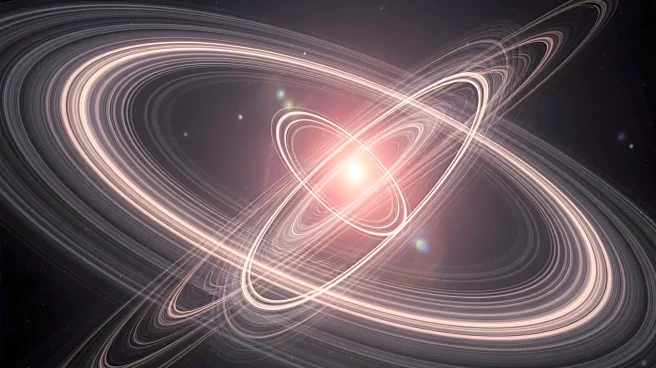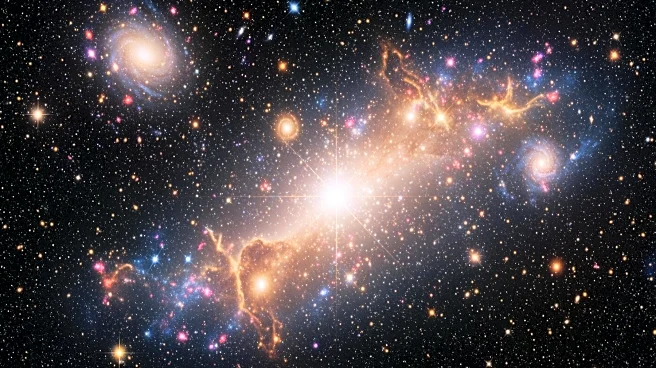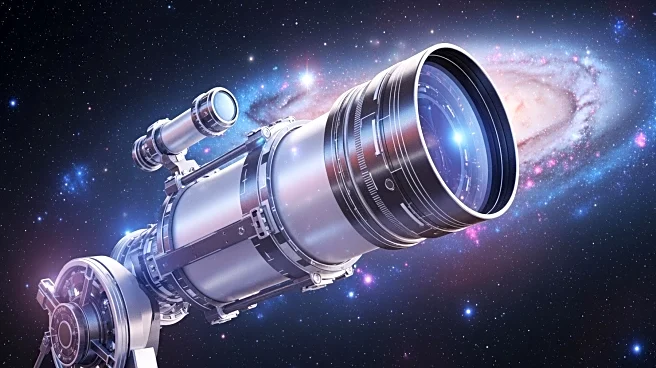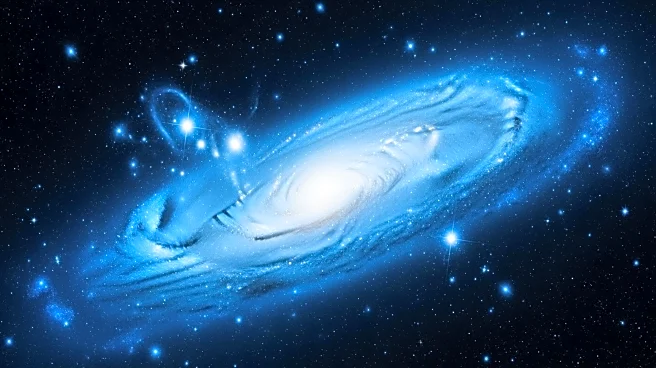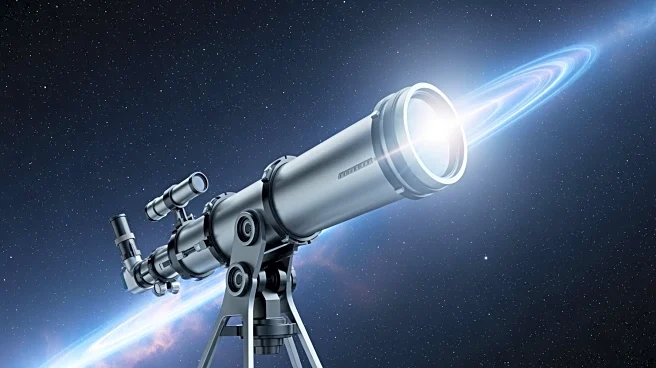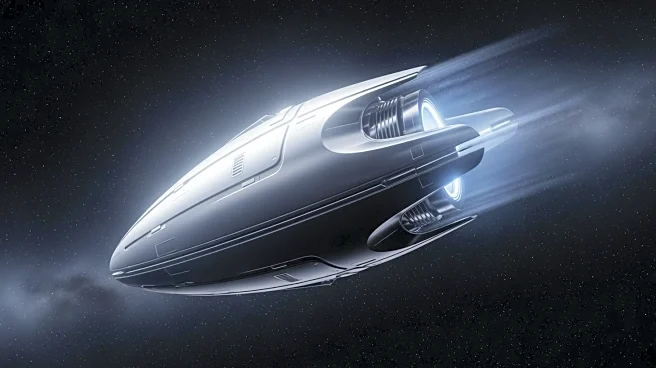What's Happening?
Recent studies have revealed that excess heat is leaking from the north pole of Saturn's moon Enceladus, indicating a stable subsurface ocean that may support life. Enceladus, known for its active ocean since
2005, exhibits giant plumes of water vapor powered by tidal interactions with Saturn. These interactions maintain the moon's interior warmth, crucial for sustaining liquid water. The study led by Georgina Miles from the Southwest Research Institute found that Enceladus' north pole is warmer than expected, suggesting a balanced energy flow that prevents the ocean from freezing or overheating. This balance is essential for maintaining the moon's habitability over geological timescales.
Why It's Important?
The findings bolster Enceladus' status as a prime candidate in the search for extraterrestrial life. The stable energy balance suggests that the moon's ocean has remained liquid for extended periods, providing a potentially habitable environment. Understanding Enceladus' heat dynamics is crucial for future missions aiming to explore its ocean and assess its ability to support life. The study underscores the importance of long-term space missions to gather comprehensive data on celestial bodies that may harbor life.
What's Next?
Future missions, potentially launching in the 2040s, aim to explore Enceladus further, focusing on its tiger stripes where plumes are most active. These missions will seek to drill into the moon's ocean to study its composition and potential for life. The research highlights the need for sustained observation and technological advancements to unlock the secrets of ocean worlds like Enceladus.
Beyond the Headlines
The study emphasizes the importance of understanding planetary energy balances in the context of habitability. It also highlights the role of tidal interactions in shaping celestial environments, offering insights into the dynamics of other ocean worlds in the solar system.



